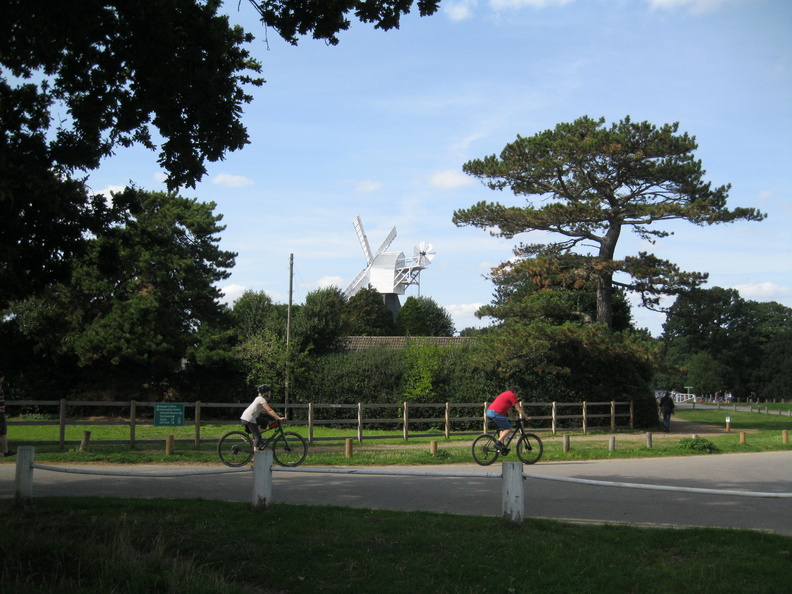Wimbledon Common (Merton)
Brief Description
Wimbledon Common is managed by Wimbledon and Putney Common Conservators. The earliest history of the commons dates back to the Palaeolithic Age. In 1864 the lord of the manor, Earl Spencer, proposed enclosing 700 acres to form a park for a new mansion near the windmill and selling 300 acres for building. He was prevented by the Select Committee enquiry of 1865 that led to the Metropolitan Commons Act 1866. Eventually an Act of Parliament in 1871 secured the future of Wimbledon Common, entrusting it to a Board of Conservators with annual compensation paid to Earl Spencer. The Common has changed little although woodland is now extensive on the west and north, Shadwell Wood in the south reduced by 1 of the 2 golf courses here, formed in 1908.
Practical Information
- Site location:
- Wimbledon Parkside/Cannizaro Road/Roehampton Vale
- Postcode:
- SW19/SW20
- What 3 Words:
- part.opera.voices
- Type of site:
- Public Open Land
- Borough:
- Merton
- Open to public?
- Yes
- Opening times:
- unrestricted
- Special conditions:
- Facilities:
- car park; Windmill Museum, café, toilets; Windmill Nature Trail.
- Events:
- Numerous events, check Wimbledon & Putney Common Conservators website
- Public transport:
- Rail/Tube: Wimbledon (District) then bus. Bus: 93, 265.
- Research updated:
- 01/06/2011
- Last minor changes:
- 14/07/2022
Please check with the site owner or manager for latest news. www.wpcc.org.uk
Full Site Description
Wimbledon Common abuts Putney Heath (q.v.) to the north and both are managed, along with Putney Lower Common (q.v.), by Wimbledon and Putney Common Conservators. The overall area of the commons and heath are just over 461 hectares. The earliest history of the commons dates back to the Palaeolithic Age with barrows such as that at Caesar's Camp, an Iron Age fort. Caesar's Well has a natural spring that reputedly supplied Caesar's camp. In the ownership of the Manor of Wimbledon, in 1864 Earl Spencer, Lord of the Manor, proposed to enclose 700 acres of the common as a park, create a garden on 2 acres for a new manor house near the windmill and sell the remaining 300 acres for building land. The Bill he intended to present to Parliament was delayed by the Select Committee set up to examine open spaces around London, a Wimbledon Common Committee was set up under the chairmanship of Sir Henry Peek, MP, and eventually the Common was protected by the Commons Preservation Society by Act of Parliament in 1871.
The land was conveyed to a body of Conservators, 5 elected and 3 appointed, charged to keep the Common open, unenclosed, unbuilt on and preserved, with compensation paid to Earl Spencer by an annuity which was only finally redeemed in 1968. A memorial to Sir Henry Peek is at Caesar's Well. Wimbledon Common has a range of habitats from wet and dry heath, grassland, woodland and 5 ponds, as well as the Beverley Brook that runs through the site.
Among the features on the common are the Windmill built in 1817 converted into cottages in the 1860s, restored in c.1890 and was where Baden Powell began writing Scouting for Boys in 1907. The windmill was restored again in c.1950 and is believed to be the only remaining hollow-post flour mill remaining in this country, and is now a Museum. The common has been used for numerous events over the years including early flying attempts, for reviews of army volunteers in the C19th and for competitions by the National Rifle Association between 1860-90. It is still very much a common with rough grass and bracken contrasting with smooth turf and woodland. It is crossed by numerous paths.
Sources consulted:
Walter Johnson 'Wimbledon Common; its Geology, Antiquities and Natural History', (1912); Norman Plastow, 'A History of Wimbledon and Putney Commons'; Tony Drakeford and Una Sutcliffe (eds.) 'Wimbledon Common & Putney Heath: A Natural History' Sanders; Wimbledon and Putney Commons website (www.wpcc.org.uk); The Parks Agency 'Commons, Heaths and Greens in Greater London. A short report for English Heritage', 2005
Further Information (Planning and Conservation)
- Grid ref:
- TQ229715 (522950,171550)
- Size in hectares:
- 461 of which 282 in LBM
- Site ownership:
- LB Merton
- Site management:
- Wimbledon and Putney Common Conservators
- Date(s):
- 1871
- Designer(s):
- Listed structures:
- LBII*: Windmill. LBII: War Memorial at junction with Parkside; Drinking Fountain & Cattle Trough on Parkside. SAM: Caesar's Camp
- On National Heritage List for England (NHLE), Parks & Gardens:
No- Registered common or village green on Commons Registration Act 1965:
Wimbledon & Putney Commons Act 1871- Protected under London Squares Preservation Act 1931:
No
Local Authority Data
The information below is taken from the relevant Local Authority's planning legislation, which was correct at the time of research but may have been amended in the interim. Please check with the Local Authority for latest planning information.
- On Local List:
- No
- In Conservation Area:
- Yes (part)
- Conservation Area name:
- Wimbledon Windmill
- Tree Preservation Order:
- Not known
- Nature Conservation Area:
- Yes - Metropolitan Imp / Boro Imp I (Golf Course)
- Green Belt:
- No
- Metropolitan Open Land:
- Yes
- Special Policy Area:
- Yes - Archaeological Priority Zone
- Other LA designation:
- SSSI and Special Area for Conservation (SAC). Green Corridor.
Photos
Wimbledon Common - windmill - Photo: Colin Wing
Date taken: 12/09/20 14:15Click a photo to enlarge.
Please note the Inventory and its content are provided for your general information only and are subject to change. It is your responsibility to check the accuracy.





